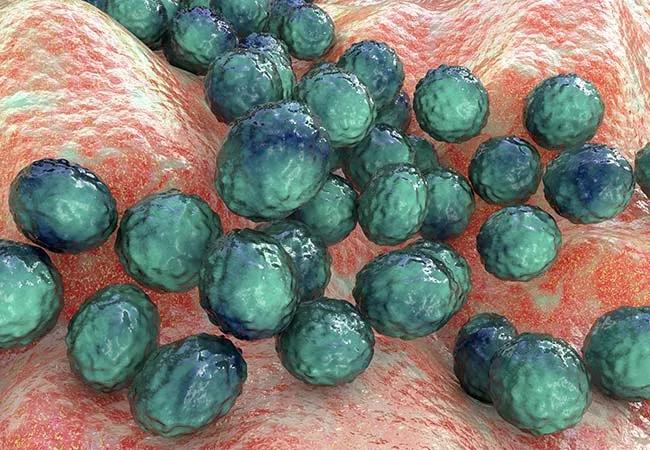Outcomes research explores antibiotic regimens

Staphylococcal scalded skin syndrome (SSSS) is an exfoliative dermatitis mediated by Staphylococcus aureus toxin, and its incidence is rising. A prior study demonstrated variability in the evaluation of children with SSSS, but the degree of testing did not impact patient outcomes.1
Advertisement
Cleveland Clinic is a non-profit academic medical center. Advertising on our site helps support our mission. We do not endorse non-Cleveland Clinic products or services. Policy
The treatment of SSSS includes both supportive measures and antistaphylococcal antibiotics. Clindamycin has historically been included in treatment to inhibit bacterial protein synthesis.2 However, a paucity of data raises questions about the most effective antibiotic(s) for SSSS. Is clindamycin monotherapy sufficient, or are additional antibiotics more effective?
A multi-institution team, including Dana Foradori, MD, a pediatric hospitalist at Cleveland Clinic Children’s, utilized the Pediatric Health Information System database to review outcomes among children admitted to U.S. children’s hospitals with SSSS from 2011-2016.3
The most frequently utilized antibiotic regimens were clindamycin monotherapy, clindamycin + methicillin-resistant S. aureus coverage and clindamycin + methicillin-sensitive S. aureus coverage.* In patients who received these regimens, we did not find any associated differences in length of stay or treatment failure, even after adjustment for illness severity. Combination therapy was associated with higher cost in this population.
Prospective trials are necessary to confirm these findings, especially in light of evolving S. aureus resistance.
*Additional antibiotic regimens, including MSSA and MRSA-directed monotherapy, were infrequently utilized, and sample size was insufficient for analysis.
References
Advertisement
Advertisement

Integrated care model reduces length of stay, improves outpatient pain management

A closer look at the impact on procedures and patient outcomes

Experts advise thorough assessment of right ventricle and reinforcement of tricuspid valve

Study also finds that 26% of children with cancer have mutations in DNA repair genes

A closer look at current uses and future opportunities

Experts are challenging the one-size-fits-all paradigm

Quality improvement project addresses unplanned extubation

Cardiac imaging substudy is the latest paper originating from the VANISH trial